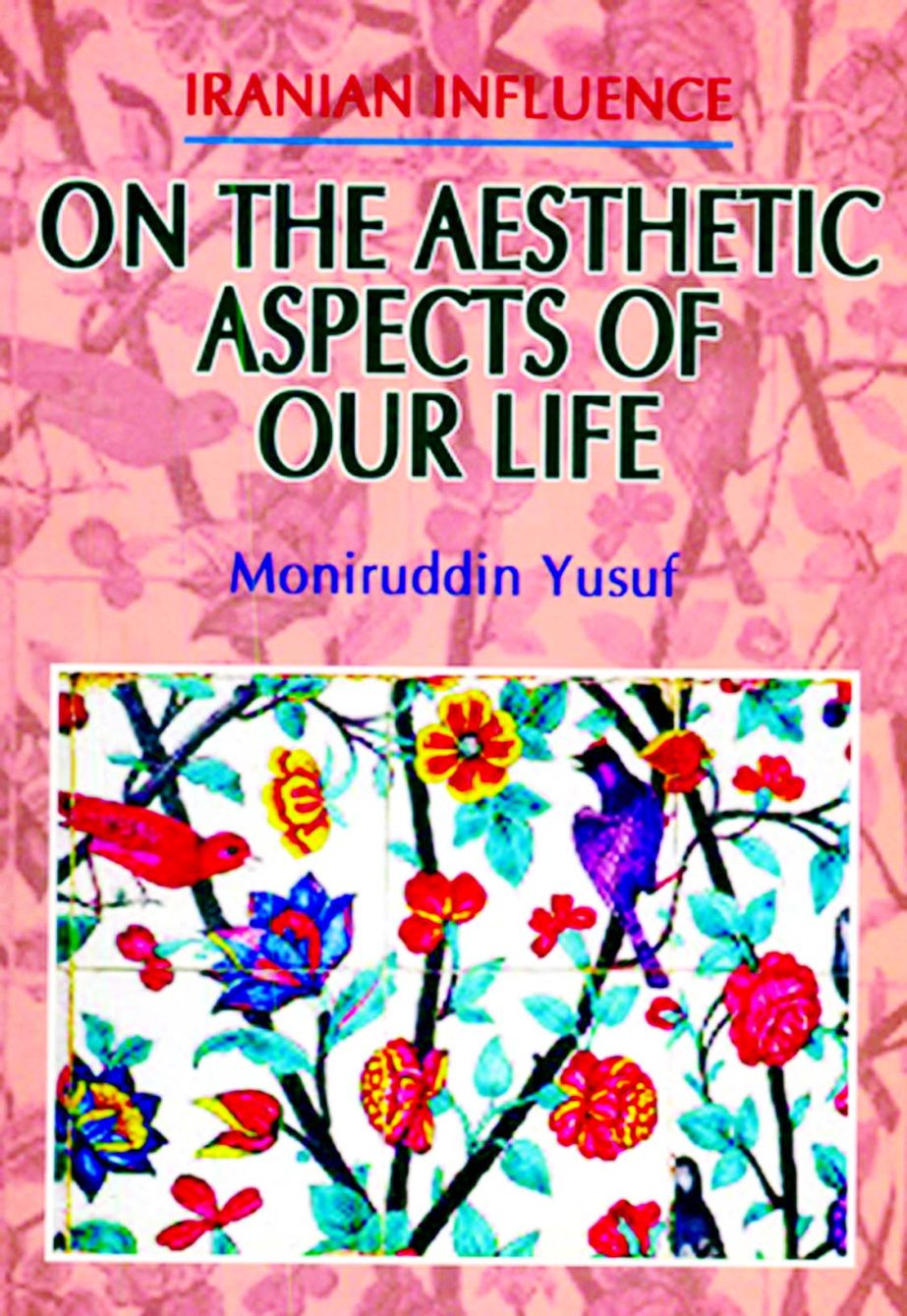
The book entitled: Iranian Influence on the Aesthetic Aspects of our Life by renowned Bangladeshi scholar Moniruddin Yusuf clearly depicted that a solid Irano-Bangla cultural heritage has evolved out of the long six and a half centuries of rule (13th-19th Centuries) of the Indian sub-continent including Bengal by the Muslim rulers (ie, the Mughal Emperors) mostly of Persian origin having deep-rooted aesthetic influence upon the individual and social life of the people of the sub-continent.
By way of talking about influence of religion and culture in the form of refined values in individual as well as collective life of man in the society, the author has beautifully drawn a correlation between aesthetics and human mind making beauty of refinement as a lofty object with human mind as a watcher or observer of it.
The book is, so to say, a chronicle of a series of significant events and personalities: the conquest of Bengal (1201 AD) by Bakhtiyar Khilji, The tragedy of Karbala, Sultan Ghiyasuddin’s invitation to Persian poet-philosopher Hafiz Shirazi to pay a visit to the court of the Sultan of Bengal and so on, and immortal personalities like the saints and sufis including Hazrat Shahjalal, Persian philosopher-poet Jalaluddin Rumi, Allamah Iqbal, Sheikh Sadi, Imam Ibn Taimiya and so on- all having contributed to the development of numerous aesthetic aspects including revival of spirituality in different ways in the life of mass people of Indian sub-continent in general and that of our Bengal in particular. Repeated reference of religious scriptures including Ramayana, Mohavarat as well as Shahnama, Akbarnama, Gulistan, Bostan testify to the fact that Indian philosophies and religious beliefs propelled by the then Indian religious and literary leaders and veterans were directly influenced by those of Iran.
Interestingly enough, a parallelism has been drawn between the poetic exercises by the leading poets of Bengal like Kazi Nazrul Islam, Rabindranath Tagore, Poet Alaol, Varotchandra, Chandi Das, Sree Choitinyo, Amir Khasru and Moulana Jalaluddin Rumi, Hafiz Shirazi, Shekh Saadi and so on in which Hafiz compared poets of Bengal with the parrots of Bengal. The author has shown that the literary works of these immortal souls were replete with transcendental values of love and spirituality that has bound together the vast territory of Indian sub-continent and the great empire of Persia by the spirit of close affinity and dedication for winning Taqdir, that is, fate and predestination through persistent strivings.
The book appears to be a conscious attempt to show how religious and cultural spirit of Islam and Islam-oriented greater Persian Empire was spread over the lives of even the common masses of the vast Indian sub-continent through Persian language spoken by the rulers and preachers as well as through religious preaching under the patronage of the then ruling class. Religious-cultural festivals observed in Indian sub-continent and Bengal including Muharram, Zari, Sari, Tazia Procession, Shabe Barat as well as existence of about four thousand Persian words and phrases covering all walks of life not only in Bengal but also throughout other regions of the Indian sub-continent does clearly testify to this fact.
The book does also trace Islamic/Persian influence in music, art, architecture etc by making mention of the Kutub Minar (Delhi), Shalimar Garden (Lahore), Soma Rah (Iraq), Kubbatus Sakhra (Jerusalem) as well as world- famous Persian carpets of Iran.
The author of the book has come up with a definition of aesthetics (which he just mentions as state of mind) but avoids elaboration due to difficulty in doing so. But the definition will remain incomplete and difficult to understand if we do not mention that aesthetics is the capacity or tendency of human mind to appreciate beauty: beauty of love, spirituality, religion, culture, philosophy and the like. Aesthetics may be called an antonym of what is course, and merely physical while a synonym of what is refined, and spiritual.
The book appears to be enthusiastic in branding Iranian language, literature, taste, culture, philosophy and the like as agents directly affecting those of Indian sub-continent in the fashion of political influence which does not give a very sober impression, although much of which I do not prefer to be in disagreement with. The presentation of the rightly identified issue should have been entitled with more of a sense of cooperation, collaboration, and mutuality rather than one side acting while the other side just passively receiving. A balance between these two could have increased the beauty, value and acceptability of the book. n
(The writer is a WB Specialist, researcher, free lance development professional, and translator and editor of books, journal, etc)
-Reviewed by Abdul Awal Miah

